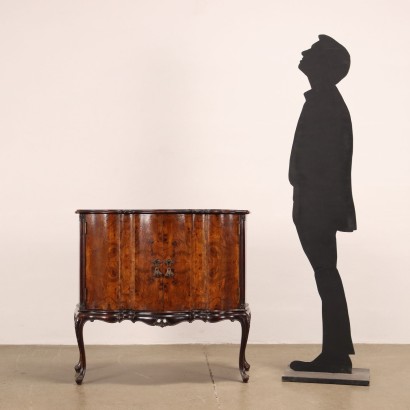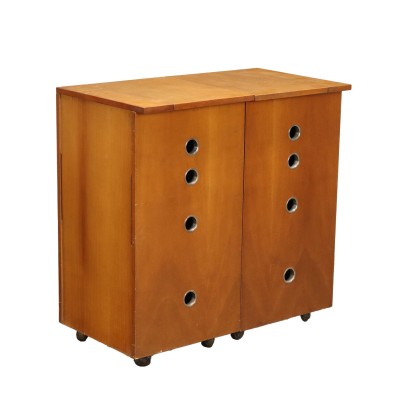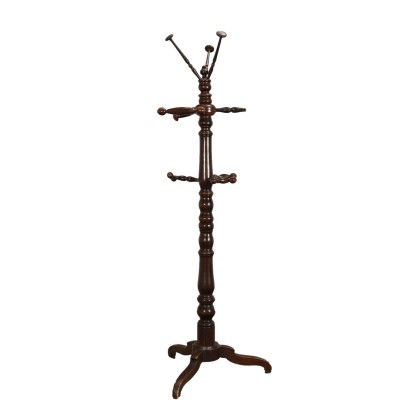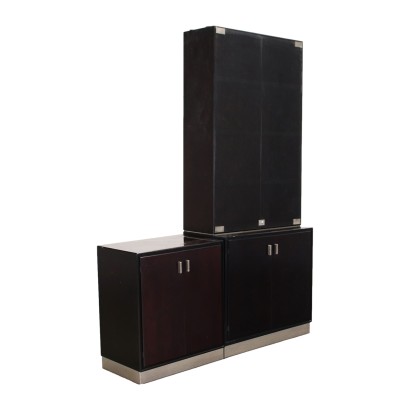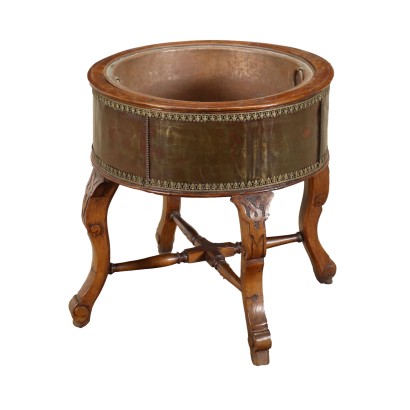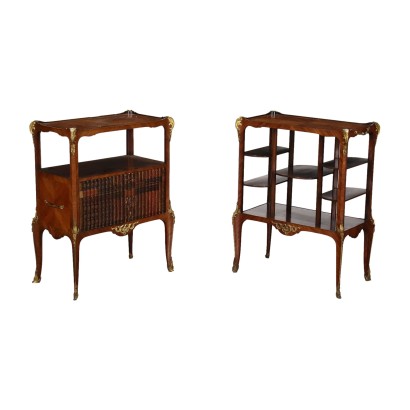Chippendale Style Bar Cabinet Walnut Italy XX Century - Italy 20th Century
Features
Italy 20th Century
Style: In the style of Chippendale
Age: 20th Century / 1901 - 2000
Origin: Italy
Main essence: Walnut
Material: Burnished Bronze , Walnut Burl Veneer , Mirror , Glass
Description
Small Chippendale style bar cabinet veneered in briar walnut, Italy 20th century. Mirrored interior with glass shelves, burnished bronze handles.
Product Condition:
Product that due to age and wear may require restoration and resumption of polishing.
Dimensions (cm):
Height: 87,5
Width: 95,5
Depth: 40
Additional Information
Style: In the style of Chippendale
Predominant style in English furniture in the second half of the eighteenth century.The Chippendale style is named after Thomas Chippendale, a famous English furniture manufacturer of the 1700s.
He began by designing Rococo-style furniture with the addition, from time to time, of oriental decorations and finally furniture with a neoclassical taste.
Its production concerns decidedly expensive and elaborate furniture but also common and, above all, cheap ones.
This style is, chronologically, followed by Art-Decò and Liberty.
Age: 20th Century / 1901 - 2000
20th Century / 1901 - 2000Main essence: Walnut
Walnut wood comes from the plant whose botanical name is juglans regia , probably originally from the East but very common in Europe. Light or dark brown in color, it is a hard wood with a beautiful grain, widely used in antique furniture. It was the main essence in Italy throughout the Renaissance and later had a good diffusion in Europe, especially in England, until the advent of mahogany. It was used for solid wood furniture and sometimes carvings and inlays, its only big limitation is that it suffers a lot from woodworm. In France it was widely used more than anything else in the provinces. In the second half of the eighteenth century its use decreased significantly because mahogany and other exotic woods were preferred.Material:
Burnished Bronze
Walnut Burl Veneer
Mirror
Glass
Alternative proposals
It could also interest you




